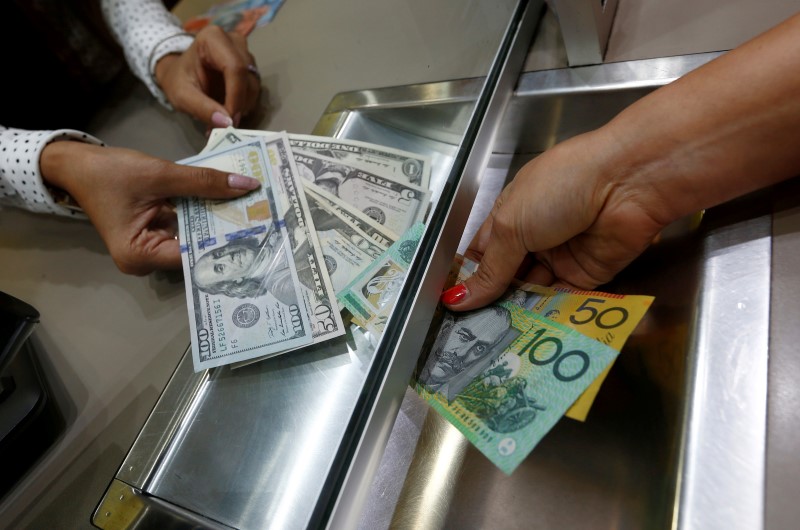Investing.com - The Aussie edged higher in early Asia on Tuesday ahead of central bank minutes in Australia and a continued focus on policy moves by regional central banks.
AUD/USD traded at 0.7678, up 0.07%, while USD/JPY changed hands at 101.21, down 0.04%.
The Reserve Bank of Australia releases the minutes from its August board meeting where it cut the cash rate to a record low 1.50%.
The U.S. dollar index, which measures the greenback’s strength against a trade-weighted basket of six major currencies, was last quoted at 95.58.
Overnight, the dollar fell on Monday as a rash of subdued economic data in Asia increased the possibility for further stimulus measures from leading central banks, applying downside pressure on the volatile greenback.
Investors on Monday continued to monitor global central bank activity closely ahead of next week's Jackson Hole Summit for leading central bankers in Wyoming. On Monday, the Nikkei fell 0.3% amid subdued economic growth in Japan over the three-month period through June, exacerbating concerns that further stimulus plans could be forthcoming before the end of the year.
Over the quarter, Japan's economy grew at a rate of 0.2% over the prior 12 months, sharply below forecasts of a 0.7% increase and marking a considerable slowdown from gains of 2% over the first three months of the year. The subdued report comes in the wake of the launch of a ¥28 trillion stimulus plan aimed at staving off deflation.
In addition, stock markets in China soared roughly 3% to a seven-month high, as investors prepared for fresh stimulus measures in the world's second-largest economy following the release of weak economic data on Monday. Last month, new bank loans in China rose to 463.6 billion yuan, the data showed, approximately half the level anticipated by economists in a Bloomberg survey. The weak reading triggered for fresh concerns of the need for loose monetary policies by the People's Bank of China to jumpstart an economy mired in the slowest period of economic growth in two decades.
As leading central banks worldwide continue to employ unconventional negative interest rate policies in an effort to boost economic growth, the Fed weighs the timing of its next interest rate hike. When the Federal Open Market Committee (FOMC) approved a 25 basis point rate hike last December, the U.S. central bank estimated that it could raise rates as much as four times this year at the start of its first tightening cycle in nearly a decade. The FOMC, though, has left rates steady at each of its five meetings this year amid mixed employment data and below target inflation.
Any rate hikes by the FOMC this year are viewed as bullish for the dollar as investors pile into the greenback in order to capitalize on higher yields.
